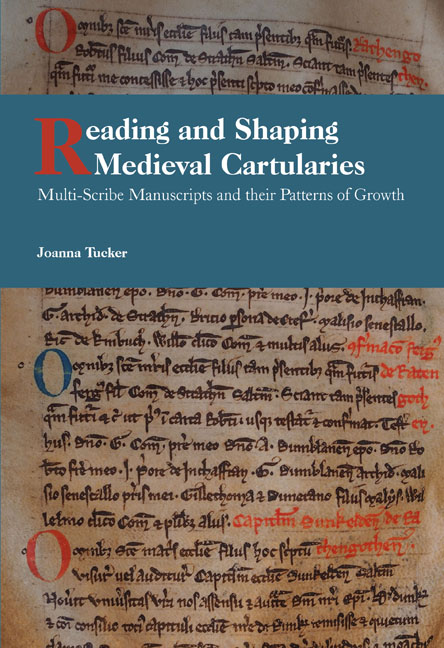Book contents
- Frontmatter
- Contents
- List of Plates
- List of Figures
- List of Tables
- Acknowledgements
- List of Abbreviations
- Conventions
- Introduction
- 1 Cartulary Studies
- 2 Analysing a Multi-Scribe Cartulary
- 3 The Creation and Growth of the Glasgow RV
- 4 The Creation and Growth of Lindores Caprington
- 5 Understanding the Patterns of Growth in Multi-Scribe Cartularies
- 6 Conclusion
- Appendix: Contents of the two Cartularies by ‘Series’
- Bibliography
- Index
- Studies in Celtic History
- Frontmatter
- Contents
- List of Plates
- List of Figures
- List of Tables
- Acknowledgements
- List of Abbreviations
- Conventions
- Introduction
- 1 Cartulary Studies
- 2 Analysing a Multi-Scribe Cartulary
- 3 The Creation and Growth of the Glasgow RV
- 4 The Creation and Growth of Lindores Caprington
- 5 Understanding the Patterns of Growth in Multi-Scribe Cartularies
- 6 Conclusion
- Appendix: Contents of the two Cartularies by ‘Series’
- Bibliography
- Index
- Studies in Celtic History
Summary
Cartularies are one of the most important, rich, and pervasive sources for medieval historians. A countless number of document texts survive only because they were copied into a cartulary at some point. As well as a source for otherwise lost documents, the cartulary has recently come to be regarded as a particular ‘type’ of text in its own right that could reflect the preoccupations, practices, and even mindset of its compilers. The time is now ripe to consider cartularies not only as texts but as manuscripts. In other fields of research increasing attention is given to a text's ‘physical context’ as a way to understand its use, transmission, and reception. This book brings together these two ways of thinking about the cartulary – as text and as a manuscript – through two examples from medieval Scotland. A new approach for reading cartularies like these will be demonstrated, an approach which aims to understand their function as far as possible through their materiality and the patterns of their scribal activity.
The two manuscripts in question are the oldest cartularies of Glasgow Cathedral (re-established as an episcopal seat with a chapter of secular canons in the early twelfth century) and Lindores Abbey (a Tironensian monastery in Fife founded by David, earl of Huntingdon, around 1190). Both cartularies were initially created in the thirteenth century, but both also experienced a range of additions over the following decades and centuries up to the second half of the fifteenth century. The result is two codicologically complex manuscripts that contain the work of dozens of different scribes, each with an accumulation of contents stretching across three centuries or more. In this way, they are in fact typical of many other medieval manuscripts and cartularies. When faced with such a chaotic assemblage of material, the natural response is to home in on the earliest scribe, examining the content and arrangement of their work. A more holistic view is attempted here, however, taking in the additions as well as the initial portion. In fact, it will be shown that the way the manuscripts grew offers an important insight in itself into how the cartularies were being used by their communities. This will demonstrate the extent to which cartularies can be treated as sources in their own right, not just for the document texts they contain.
- Type
- Chapter
- Information
- Reading and Shaping Medieval CartulariesMultiple Scribes and Patterns of Growth, pp. 1 - 3Publisher: Boydell & BrewerPrint publication year: 2021



